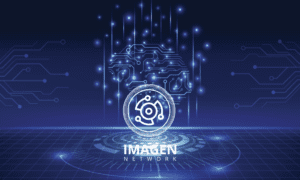In the ever-evolving landscape of technology, where data reigns supreme, the concept of edge computing has emerged as a game-changer. In this digital era, where the demand for real-time data processing is at its peak, traditional cloud computing models face challenges in meeting these requirements. Enter edge computing, a paradigm that brings data processing closer to the source – unlocking a world of possibilities and transforming the way we handle information.
Understanding Edge Computing: A Brief Overview
Edge computing is a decentralized computing model that brings computation and data storage closer to the location where it is needed. Unlike traditional cloud computing, where data is sent to a centralized data center for processing, edge computing processes data on or near the source of the data generation. This proximity reduces latency and enhances the speed of data processing, making it a key player in today’s data-driven ecosystem.
Reducing Latency: The Need for Speed
Latency, or the delay between sending and receiving data, is a critical factor in various applications, from gaming to autonomous vehicles. Edge computing addresses this challenge by processing data at or near the source, minimizing the time it takes for information to travel back and forth. This reduction in latency is particularly crucial in applications where split-second decisions can make a significant difference.
Consider the realm of autonomous vehicles. These vehicles rely on a multitude of sensors and cameras to navigate through the environment. With edge computing, the data from these sensors can be processed locally, allowing the vehicle to make instant decisions without relying on a distant data center. This not only improves safety but also opens up new possibilities for the integration of advanced technologies in various sectors.
Enhanced Security: Keeping Data Closer to Home
As the volume of sensitive data generated continues to soar, security concerns become paramount. Edge computing offers a solution by keeping data closer to its source, reducing the risk of data breaches during transit to centralized servers. In a world where cybersecurity is a constant battle, this proximity-based approach provides an added layer of protection.
Imagine a scenario where a manufacturing facility utilizes edge computing to process data from its IoT devices. By doing so, critical information about machinery performance and production processes is kept within the confines of the facility. This not only safeguards intellectual property but also minimizes the vulnerability associated with transmitting sensitive data over long distances.
Optimizing Bandwidth Usage: A Smart Approach
Bandwidth is a valuable resource, and optimizing its usage is crucial for efficient data processing. Edge computing plays a pivotal role in this optimization by processing data locally and transmitting only essential information to centralized servers. This smart approach not only conserves bandwidth but also ensures that the network is not congested with unnecessary data.
Consider the scenario of a smart city with numerous IoT devices collecting data for various purposes, from traffic management to waste disposal. Through edge computing, these devices can process and filter data locally, sending only relevant information to centralized servers. This not only reduces the strain on the network but also ensures that valuable bandwidth is used judiciously.
The Internet of Things (IoT): Edge Computing’s Perfect Companion
The synergy between edge computing and the Internet of Things (IoT) is undeniable. As the number of connected devices continues to skyrocket, the demand for real-time data processing becomes more pronounced. Edge computing provides a scalable solution by distributing the computational load across a network of edge devices.
Picture a smart home equipped with various IoT devices – from smart thermostats to security cameras. it allows these devices to process data locally, enabling quick responses to user commands without relying on a distant cloud server. This not only enhances the user experience but also reduces the dependency on a stable internet connection for basic functionality.
Edge Computing in Healthcare: A Lifesaving Innovation
In the realm of healthcare, where timely decisions can be a matter of life and death, edge computing emerges as a lifesaving innovation. Medical devices, wearables, and sensors can process critical patient data locally, providing healthcare professionals with real-time insights. This instantaneous analysis is particularly crucial in emergency situations, where every second counts.
Imagine a scenario where a patient’s wearable device detects a sudden irregularity in their heart rate. With edge computing, this data can be processed locally, triggering an immediate alert to the healthcare provider. This swift response can make a significant difference in situations such as cardiac emergencies, demonstrating how edge computing is not just a technological advancement but a tool with the potential to save lives.
Challenges and Future Prospects
While the benefits of edge computing are substantial, it is essential to acknowledge the challenges that come with its implementation. Managing a distributed network of edge devices, ensuring data consistency, and addressing security concerns require careful consideration. However, as technology evolves, these challenges are being met with innovative solutions.
Looking ahead, the future prospects of edge computing are promising. As the technology matures, we can expect increased collaboration between edge computing and other emerging technologies such as 5G. The combination of edge computing and 5G networks will further enhance the capabilities of connected devices, opening up new possibilities for industries ranging from smart cities to augmented reality.
Conclusion
The power of proximity cannot be understated in the realm of data processing. Edge computing has ushered in a new era, transforming the way we handle and analyze information. From reducing latency to enhancing security and optimizing bandwidth usage, the benefits are reshaping industries and unlocking unprecedented opportunities. As we continue to navigate the digital landscape, the adoption of edge computing will likely become more widespread. Its seamless integration with IoT, its lifesaving applications in healthcare, and its potential to revolutionize industries highlight the transformative impact of this technology. The power of proximity, through edge computing, is not just a technological evolution – it’s a revolution that is shaping the future of data processing.



































